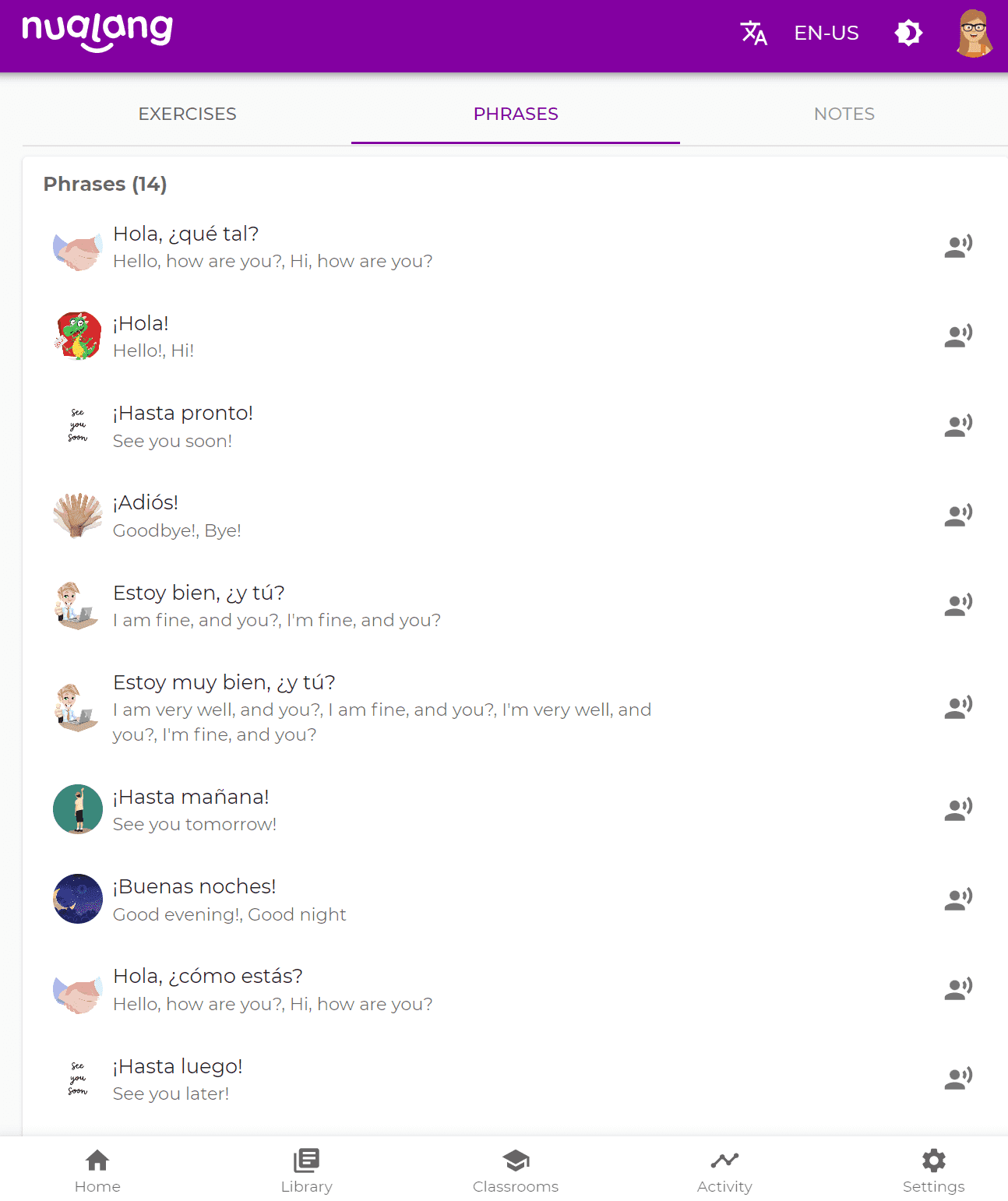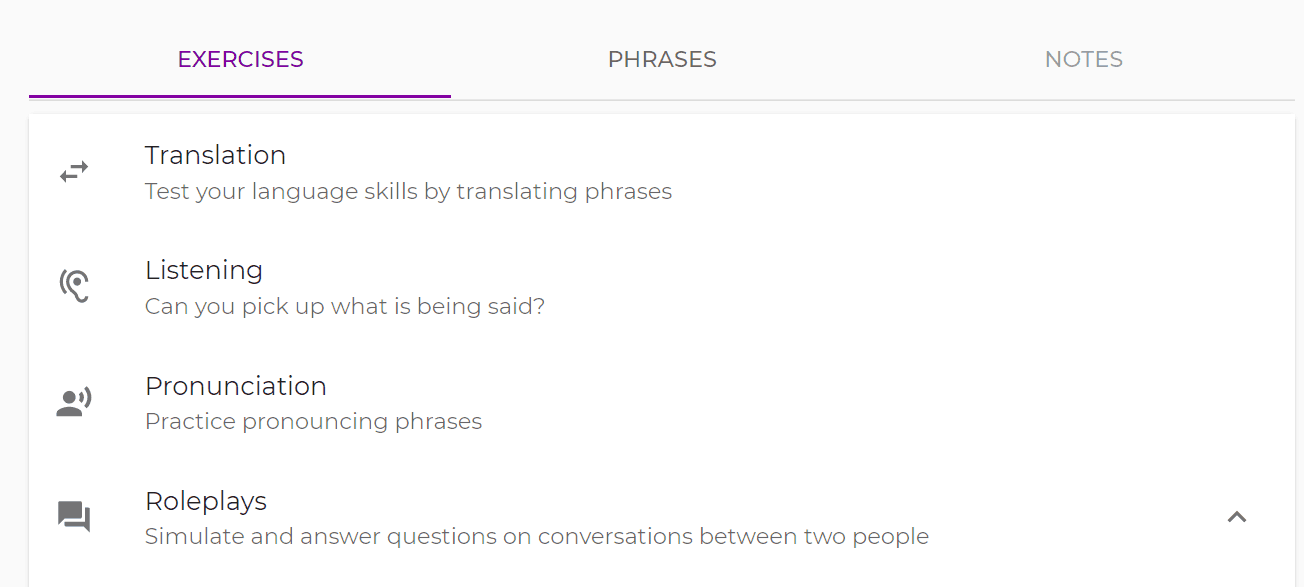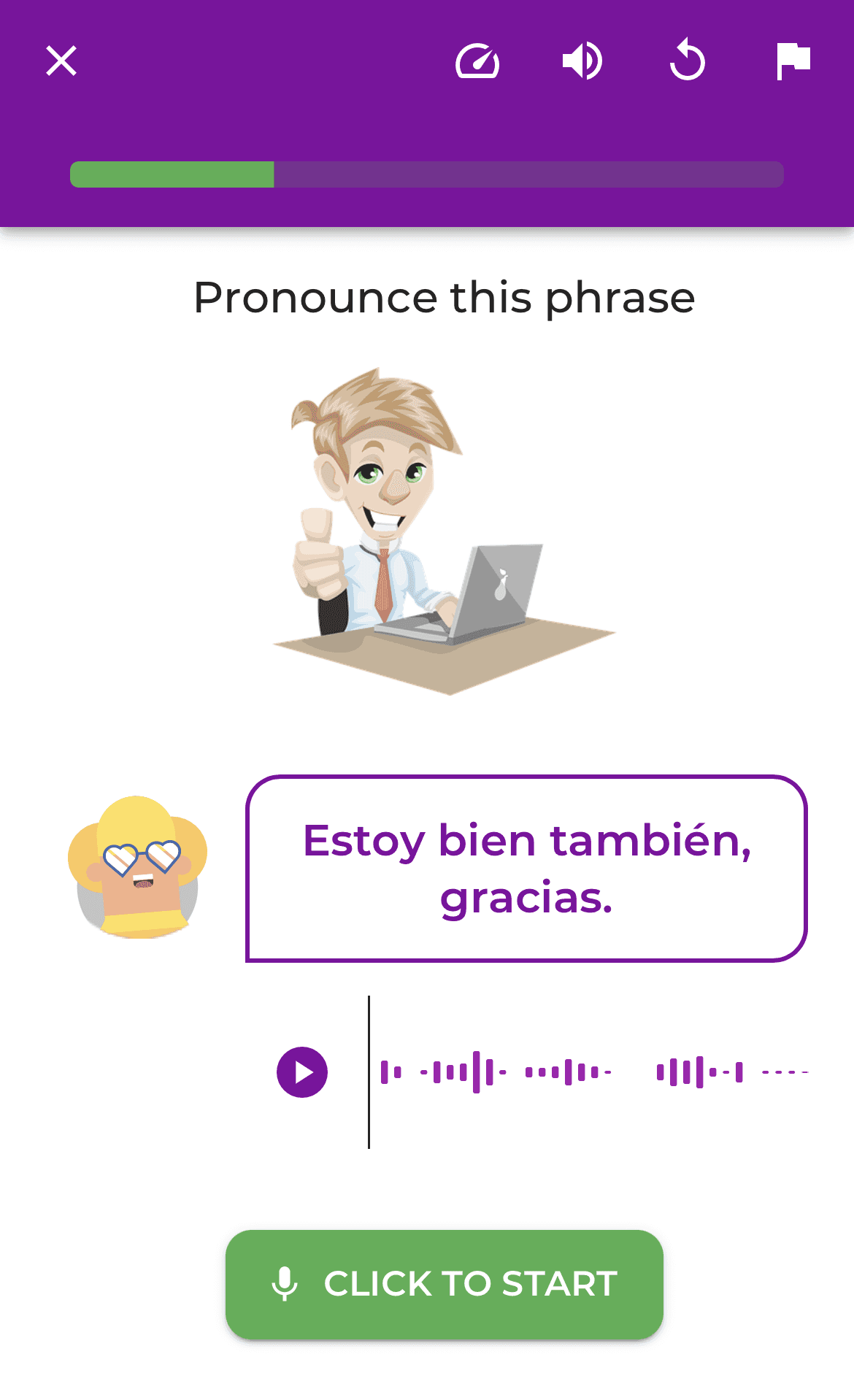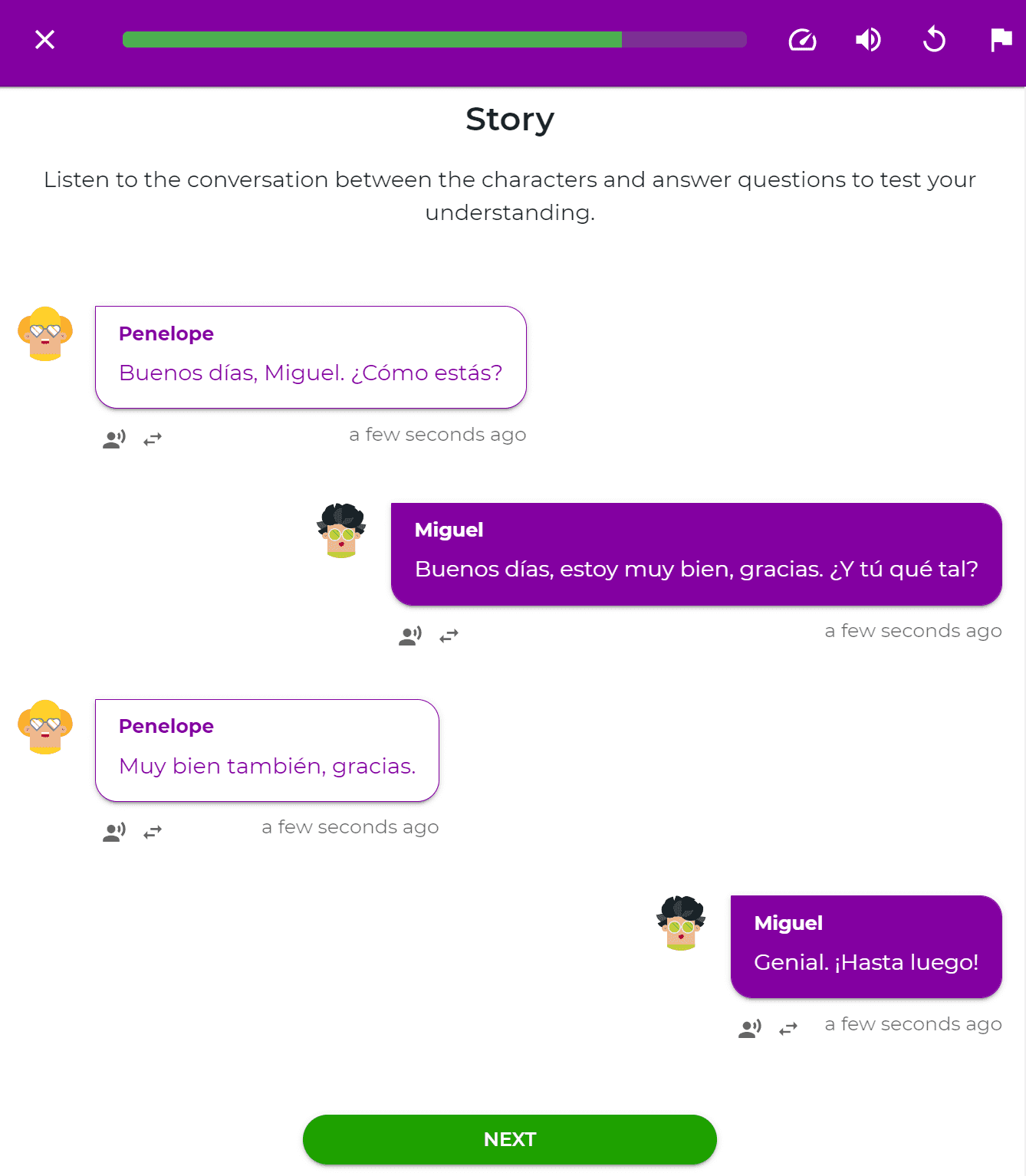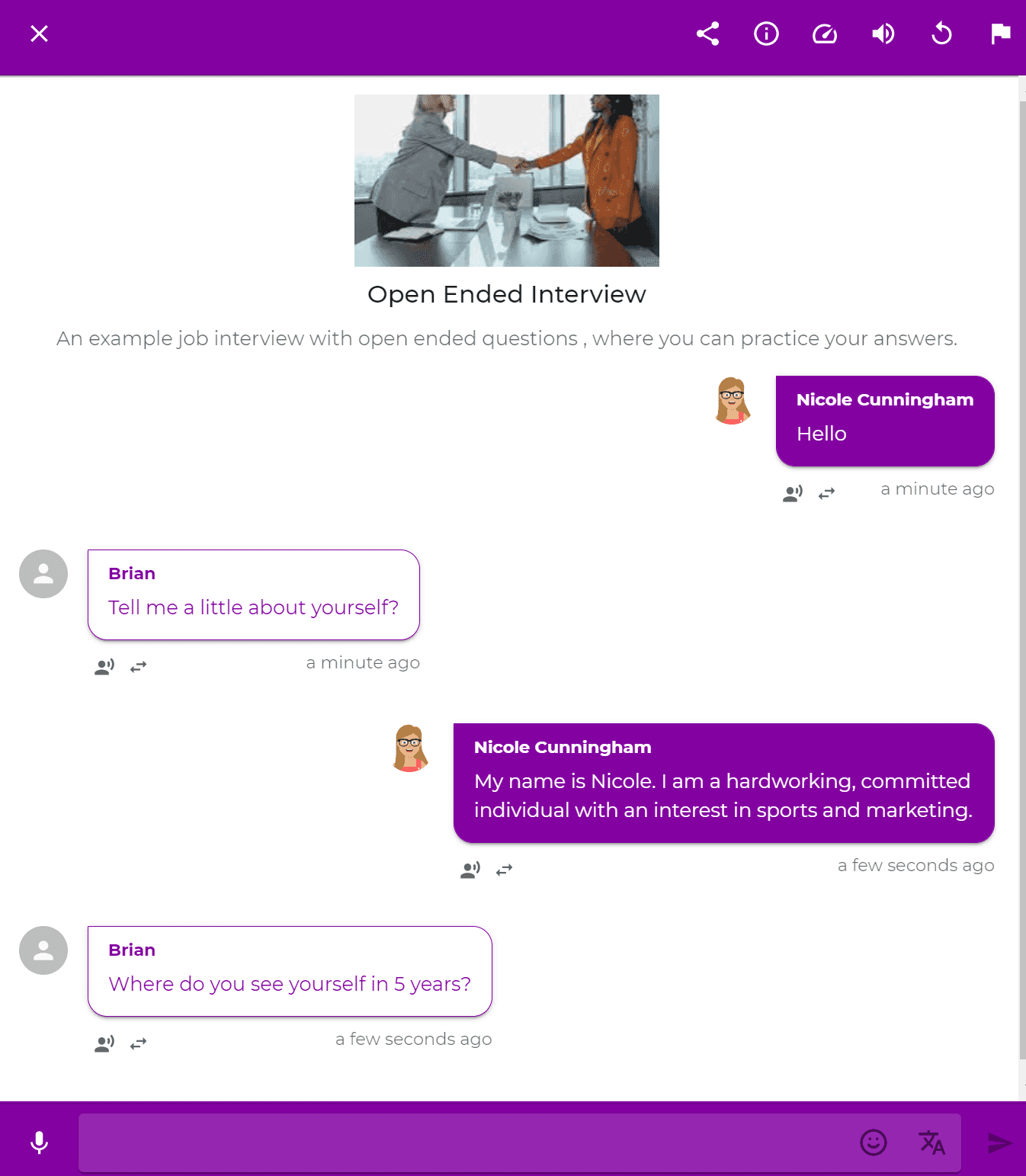Why speaking practice is so important for the language learning process
Learn how Nualang's innovative solution can support your students with their speaking practice to build confidence in conversation.
How can the most sought-after language skill be the most overlooked exercise in the language classroom? Easy. Because it not only requires a level of competence but also bravery and confidence in your abilities. What's more, for Language teachers, it is near impossible to monitor individual students' progress. So why is speaking practice so important, how can it aid students in the classroom, and how can Nualang help your students achieve their language proficiency goals.
How speaking can accelerate and aid language learning
Engagement
First and foremost, the language classroom has historically been organised in a way that hinders students' engagement by focusing on the aspects of language that interests them the least. Grammar is essential to full language competency; of course, however, it is not an aspect of language learning that excites or intrigues most students. What excites students is the ability to converse in a whole other language. The ability to speak is the sole goal of all students when beginning their language learning journey. Therefore, to enhance students' engagement in foreign language classes, they must be provided with an opportunity to reach their personal language learning goals in addition to curriculum language learning goals. An ability to converse can open countless doors for students, especially in the areas of travel and employment opportunities. However, this must be achievable and worked towards in the classroom for students to stay engaged with the rest of the curriculum.
Confidence
While the excitement and intrigue of speaking a new language may be there in students, it can be exceptionally daunting. Many students doubt their own abilities, and it has been found that higher levels of Foreign language classroom anxiety (FLCA) can be a predictor of a student deciding not to continue in their foreign language studies (Botes et al., 2020). In order to combat this, speaking practice has to be normalised in the classroom. However, in many instances, this is simply not logistically feasible. Therefore, students must be given an opportunity to practise speaking in a way they feel comfortable. Because it tends to be a rarely visited activity, students harbour anxiety when it comes to speaking in the classroom. However, encouraging students to push through this anxiety and speak in the classroom can build confidence in all areas of language learning. If they can speak with a degree of fluency, this will give students the confidence to perfect the remaining mechanical and grammatical aspects of their language proficiency journey.
Conversational fluency = Listening proficiency
When it comes to conversation, it takes two to tango. Why focus solely on listening skills when conversational exercises can harness both students' abilities to speak and listen. While speaking itself is an important skill, it is useless without a high degree of comprehension and listening skills. Likewise, for listening skills, what's the use in comprehending a language if your students cannot communicate back.
Self-lead learning and correction
When speaking exercises are utilised in language learning, it allows students to notice gaps in their knowledge and common mistakes they may be making and move towards correcting them themselves. Speaking exercises are like being thrown into the deep end. What students don't know or are not comfortable with will immediately be revealed to them. This is especially beneficial if students have an opportunity to complete speaking practices away from a wider class group, such as those available on Nualang. This way, students are made aware of what aspects need more attention without the anxiety of being incorrect in front of peers.
The four elements of speaking skills
Vocabulary
In order to communicate efficiently, we first have to be equipped with the right words and phrases for the topic of conversation. Nualang allows teachers to upload a list of phrases or vocabulary. Auto-generated translation, pronunciation and listening exercises can then help students become comfortable with the vocabulary they need to speak proficiently.
Pronunciation
Figuring out how different sounds are produced and learning the phonetic rules in a new language can be complex skills to master. Pronunciation is one of the most challenging elements of language learning and an element that, due to much uncertainty, causes a lot of anxiety among language learners. Learners fear embarrassment if they mispronounce something. Nualangs auto-generated pronunciation exercises can help students become confident and comfortable with how to say the phrases needed for a topic of conversation. Multiple dialects can be used to give students a comprehensive and authentic experience of how language works in the outside world. This way, before combining the various skills conversation requires, students can master how to say the words needed and ease the nerves when it comes to speaking in a target language.
Fluency
Fluency (or, more so, the lack of) is a significant cause of frustration among students. The long pause in between sentences, where they just can't seem to find the right thing to say or the right way to say it, can leave students feeling disheartened and discouraged in their ability. The best way to tackle fluency is to master each element of speaking. Once students are comfortable with the vocabulary, pronunciation and grammar needed, fluency will follow. Additionally, reading aloud and studying the rhythms and linking phrases of a target language can help students' sentences to flow the way they wish them to.
Grammar
While grammar shouldn't be the sole focus of communication skills, there is no doubt that it is an important skill for language proficiency. As mentioned earlier, speaking exercises can not only help students become more comfortable with language learning, it can also highlight mistakes and weaker areas of students' language skills.
How Nualang can help
Nualang offers students countless opportunities to get talking. Our aim has always been to build confidence, so all exercises are designed to make students as comfortable as possible with using their voice. We believe it is essential to harness students' excitement for communicating in a new language. Once they realise they are equipped with the right tools and are improving day by day, students become more motivated and confident in their abilities.
Individualised student support and monitoring
The prospect of monitoring multiple different speaking exercise groups can be a language teacher's worst nightmare. There is a growing body of literature that supports asynchronous speaking activities using technology in language learning (Young & West, 2018). With Nualang teachers can assign speaking exercises as homework activities and monitor and review each student's individual progress with pronunciation exercises, roleplays or chatbots. This way, no student slips through the cracks and falls behind, an occurrence which is far too common in regular classroom speaking activities. There is a growing body of literature that supports asynchronous speaking activities using technology in language learning.
Pronunciation exercises
As mentioned, in order for students to become confident communicators, it is important for them to feel comfortable with the phonetics of the new language. Nualangs pronunciation exercises allow students to practice this with phrases uploaded by teachers. Students are prompted to say a phrase/word displayed on the screen. Students are then provided with a confidence score. This reflects how confident Nualang is that the correct pronunciation was used. Students love receiving this feedback and working towards obtaining a higher score.
Multiple answer formats
Nualang allows students to provide answers during exercises using multiple different formats. Students can use a phrase bank to help them in roleplay exercises, they can also type their answers, but most importantly, students are given an opportunity to speak their answers. To simulate real-life conversational practice, students can use chatbot and roleplay exercises to build confidence when speaking.
Roleplays
Roleplay exercises can help students at the beginning of their communicative proficiency journey. Using the phrases they have learned and practised using the auto-generated activities, teachers can create a roleplay script for students to practise a conversation relating to a specific topic or scenario. Students can learn this script and use the speaking feature to improve their confidence.
Chatbots
Once students have mastered speaking in a structured roleplay format, why not try a chatbot to aid in fluency. By using an open-ended chatbot, students can mimic real-life conversations and practice speaking without correction, just like it would play out in the outside world. By utilising this exercise outside of the classroom, perhaps as a homework activity, students can build the courage and confidence to speak in front of peers in the classroom.

